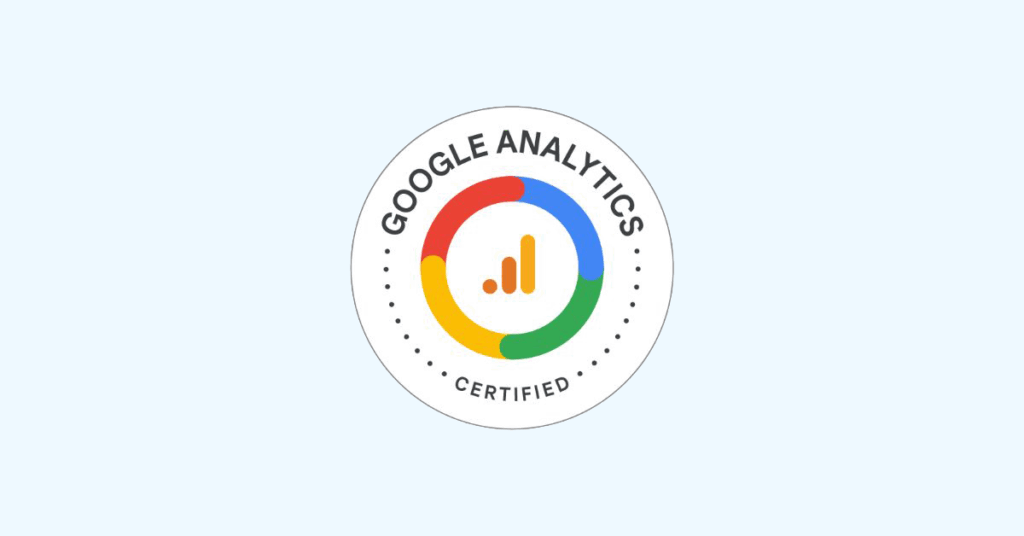 ENG
ENG- Branchen
- Finanzen
Nearshore-Softwareentwicklung für den Finanzsektor – sicher, skalierbar und Compliance-gerechte Lösungen für Banking, Zahlungsverkehr und APIs.
- Einzelhandel
Softwareentwicklung für den Einzelhandel – E-Commerce, Kassensysteme, Logistik und KI-gestützte Personalisierung durch unsere Nearshore-Engineering-Teams.
- Verarbeitende Industrie
Nearshore-Softwareentwicklung für die Industrie – ERP-Systeme, IoT-Plattformen und Automatisierungstools zur Optimierung industrieller Abläufe.
- Finanzen
- Was wir tun
- Services
- Technologien
- Kooperationsmodelle
Kooperationsmodelle passend zu Ihren Bedürfnissen: Komplette Nearshoring Teams, deutschsprachige Experten vor Ort mit Nearshoring-Teams oder gemischte Teams mit unseren Partnern.
- Arbeitsweise
Durch enge Zusammenarbeit mit Ihrem Unternehmen schaffen wir maßgeschneiderte Lösungen, die auf Ihre Anforderungen abgestimmt sind und zu nachhaltigen Ergebnissen führen.
- Über uns
- Wer wir sind
Wir sind ein Full-Service Nearshoring-Anbieter für digitale Softwareprodukte, ein perfekter Partner mit deutschsprachigen Experten vor Ort, Ihre Business-Anforderungen stets im Blick
- Unser Team
Das ProductDock Team ist mit modernen Technologien und Tools vertraut und setzt seit 15 Jahren zusammen mit namhaften Firmen erfolgreiche Projekte um.
- Wozu Nearshoring
Wir kombinieren Nearshore- und Fachwissen vor Ort, um Sie während Ihrer gesamten digitalen Produktreise optimal zu unterstützen. Lassen Sie uns Ihr Business gemeinsam auf das nächste digitale Level anheben.
- Wer wir sind
- Unser Leistungen
- Karriere
- Arbeiten bei ProductDock
Unser Fokus liegt auf der Förderung von Teamarbeit, Kreativität und Empowerment innerhalb unseres Teams von über 120 talentierten Tech-Experten.
- Offene Stellen
Begeistert es dich, an spannenden Projekten mitzuwirken und zu sehen, wie dein Einsatz zu erfolgreichen Ergebnissen führt? Dann bist du bei uns richtig.
- Info Guide für Kandidaten
Wie suchen wir unsere Crew-Mitglieder aus? Wir sehen dich als Teil unserer Crew und erklären gerne unseren Auswahlprozess.
- Arbeiten bei ProductDock
- Newsroom
- News
Folgen Sie unseren neuesten Updates und Veröffentlichungen, damit Sie stets über die aktuellsten Entwicklungen von ProductDock informiert sind.
- Events
Vertiefen Sie Ihr Wissen, indem Sie sich mit Gleichgesinnten vernetzen und an unseren nächsten Veranstaltungen Erfahrungen mit Experten austauschen.
- News
- Blog
- Kontakt

06. Nov. 2025 •5 minutes read
From metrics to meaning: GA4 powers smarter strategy
Nataša Dakić
Marketing Director
See beyond the numbers. Understand what’s working, what’s wasted, and where to invest.
Sometimes a routine task can shift your perspective. That happened to me while renewing my Google Analytics 4 (GA4) certification.
On paper, it’s a simple test. But in practice, it became a leadership reset, a reminder that staying connected to the tools our teams rely on isn’t optional. It’s essential.
This isn’t about certifications. It’s about why understanding how your data works is a core leadership skill, especially in tech and services, where digital interactions shape the entire customer journey, and buying behavior is long, fragmented, and far from linear.
Revisiting GA4 pulled me back into the technical details, consent settings, attribution logic, event parameters, and cloud exports. I’m not a data analyst expert, but diving back in reaffirmed how closely effective leadership is tied to understanding the systems that drive performance, prioritization, and strategy.

Why GA4 data fluency drives better marketing decisions
Three forces are pushing marketing into a more data-driven direction:
GA4 and accountability
Marketing is under pressure to prove revenue impact, not just clicks and impressions. 63% of marketers say ROI is now their top performance metric. 30% say proving ROI is marketing’s primary role.
Precision requires platform alignment
Budgets are lean. Successful teams rely on performance data, not gut instinct. B2B companies spend around 9.7% of their total budget on marketing. Waste isn’t an option; every move has to prove value.
GA4 fuels agility
Marketing needs real-time visibility to adjust plans quickly and effectively. 72% of budgets now go to digital channels, where speed and clarity are essential.
The cost of low data fluency
If your teams do not share a common understanding of analytics, it contributes to the data literacy gap in marketing and limits your ability to:
- Set KPIs that tie directly to the pipeline and revenue;
- Link marketing efforts to complex, multi-touch sales journeys;
- See where leads drop off or lose interest;
- Compare cost-efficiency across all your channels;
- Collaborate effectively across product, sales, and marketing;
- Support compliance and consent frameworks with confidence.
And yet, only 6% of B2B orgs turn analytics into actionable insights. The rest are falling behind, and that creates a huge opportunity.
GA4 as a leadership lens
For executive teams shaping business strategy, GA4 is more than a reporting tool; it’s a way to see how digital behavior drives real outcomes, such as revenue, pipeline, and long-term growth.
This isn’t about getting lost in day-to-day metrics, it’s about using data to guide bigger decisions. GA4 helps leaders:
- Understand how user behavior connects to financial performance;
- Allocate budget based on what’s actually working;
- Align C-level conversations around shared growth drivers.
When leadership stays close to the data infrastructure, strategy becomes grounded in evidence rather than assumptions. You see risks earlier, make faster calls, and lead with more impact.
How GA4 supports product, engineering, and UX
GA4 also enables cross-functional analytics and data democratization, empowering product, engineering, and UX teams with real-time, behavior-based insights for smarter decision-making.
Engineering teams
- Monitor real-time feature usage;
- Spot issues through user behavior signals;
- Standardize event tracking across platforms;
- Send structured data into analytics stacks.
Product teams
- Track adoption and drop-off by user segment;
- Use live behavioral data to guide roadmap decisions;
- Connect user flows to product value.
UX/UI and accessibility teams
- See where users hit friction;
- Measure the impact of design changes;
- Analyze behavior from assistive tech users to improve inclusivity.
This cross-functional view ensures that digital experience decisions are tied directly to real user behavior and real business impact.
What’s new in GA4 (2025 update) and why it matters
Getting recertified reminded me that GA4 isn’t standing still. The changes aren’t just cosmetic, they reflect how analytics must evolve to support modern business needs.
Here are the key improvements:
- Custom channel grouping
Create groupings that reflect your actual campaign structure, not just Google’s defaults, for more accurate ROI reporting. - Consent Mode V2
Improved handling of user consent helps maintain privacy compliance while preserving key analytics signals. - Predictive metrics
Churn and purchase probability models are now more actionable, helping teams automate smarter targeting and lifecycle campaigns. - Exploration reporting improvements
Segmented funnels and path analysis are now faster and more intuitive, making it easier to identify friction points and opportunities. - AI-powered insights
GA4 can now flag anomalies, audience shifts, and behavior changes—so teams can respond before performance drops. - BigQuery export enhancements
It’s easier to send raw event data into your cloud environment for deeper analysis and integration across stacks.
These aren’t just analyst features. They help everyone, from marketing to product to leadership, see further, move faster, and stay aligned.
What GA4 signals about the future
GA4 is also a signal of where digital leadership is going:
AI integration
GA4 is becoming a key data layer for AI-driven decisions. Clean behavioral inputs now feed personalization, automation, and forecasting, especially when paired with tools like Vertex AI or BigQuery ML.
Server-side tagging
As browser tracking becomes less reliable, server-side tagging helps maintain accurate, compliant tracking, especially at scale.
Data governance
Expect rising pressure for clean, permission-based, and well-structured data. GA4’s cloud integrations make it easier to manage secure, cross-functional analytics.
Why data fluency is a core leadership skill
In 2025 and beyond, leading marketing or any growth function requires more than vision. It requires a working understanding of the systems that power measurement, insight, and action.
You don’t need to be the one writing tags or building SQL queries. But you do need to know:
- What performance actually looks like;
- Where data can mislead;
- What your teams need to do their best work
When leaders stay connected to the systems and tools, strategy becomes clearer, execution becomes stronger, and growth becomes more sustainable.
Five key takeaways
1. Know your data structure to define value.
KPIs are only useful if they tie directly to business outcomes.
2. Track GA4’s evolution like a roadmap
New attribution logic, privacy rules, and AI use cases are constantly changing what’s possible.
3. Lead across teams with shared visibility.
When teams use the same data, decisions come faster, and accountability is more transparent.
4. Treat GA4 as strategic infrastructure
It’s not just a reporting tool. It’s a backbone that connects marketing, product, UX, and revenue.
5. Make curiosity your leadership edge
The best leaders don’t just ask for reports. They ask how the data works, and where it might be wrong.
Final word
Leading with GA4 data fluency turns metrics into meaning, fueling truly data-driven leadership. You don’t need to be a technical expert to lead in a data-driven world. But if you’re not paying attention to the systems your teams rely on, you’re flying blind.
Leaders who understand how their data flows, where it’s strong, where it breaks, and how it supports decisions are the ones best equipped to lead with clarity, confidence, and results.
Tags:Skip tags

Nataša Dakić
Marketing DirectorNataša has 20 years of experience leading marketing teams at global companies across different industries. She focuses on practical, results-driven strategies that help brands grow and connect with the right audience. She’s skilled at spotting market trends, understanding what customers want, and turning business goals into clear plans. Nataša values teamwork and fresh ideas, and she’s committed to helping teams grow in a smart, sustainable way, building stronger customer relationships along the way.


